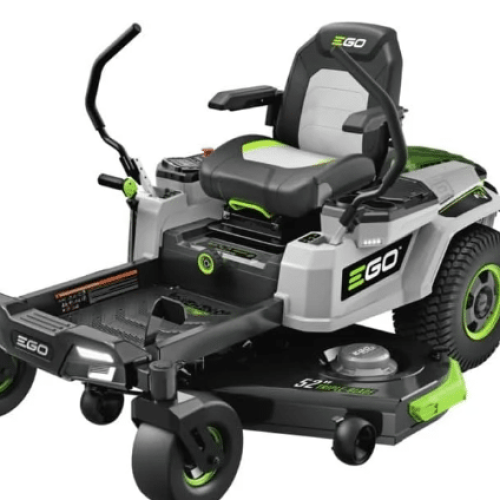Hello guys its JV Charles. Did you know that watering your lawn even once every other week during winter can strengthen its roots? This is a key part of fall lawn maintenance tips for preparing grass for cold weather. As summer ends and leaves fall, homeowners need a detailed lawn care guide to keep their yard green and lush by spring. I hope this helps.
Keeping your lawn in good shape before winter is more than just about looks. Tasks like soil testing, fertilizing, overseeding, and aerating are crucial. For example, fall is the best time to fertilize, helping your lawn store nutrients and fight off diseases1. Also, cutting your grass short for the last few times helps it grow thicker and healthier by spring2.
Good care in autumn means your lawn will be stronger against winter’s cold. This checklist will help you prepare your lawn for winter. It will stay vibrant and healthy all year. Take a look.
Key Takeaways
- Watering your lawn occasionally during winter can greatly enhance root strength3.
- Fall is prime time for fertilization, ensuring nutrient storage for winter1.
- Setting your mower lower for the last few mowings encourages thicker grass growth2.
- Overseeding during fall results in a healthier, denser lawn by spring2.
- Consistent autumn yard upkeep aids in disease resistance and aesthetic appeal.
Soil Testing and Amendments
Soil testing is key for a healthy lawn. It shows the soil’s pH and nutrient levels. This helps grass grow well. Testing in fall fixes pH and nutrients before spring4. Its easy breezy so dont worry!
Benefits of Soil Testing
Soil testing is vital. It checks pH balance for nutrient absorption. It finds nutrient gaps, helping manage soil with lime or sulfur. Regular testing keeps your lawn healthy with precise amendments5.
How to Test Your Soil
Testing your soil is easy. Mix samples from your lawn for an average. Local offices offer soil testing. They give detailed reports on pH, nutrients, and amendments needed6.
Testing every three to five years keeps your lawn healthy6.
Amendments for Optimal Soil Health
Choosing the right amendments is crucial. Products like Pennington Fast Acting Lime balance pH. Gypsum and organic fertilizers improve soil structure and nutrients5.
Fall Fertilization Techniques
Learning the right fall fertilization techniques can greatly improve your lawn’s health before winter. Using a nitrogen-rich fertilizer at the right time helps your grass grow strong in the spring.
Choosing the Right Fertilizer
Choosing a nitrogen-rich fertilizer like Pennington Full Season Lawn Fertilizer is key. It encourages strong blade growth early in the season. Phosphorus-rich formulas, on the other hand, boost root growth as it gets colder7.
Application Timing
JayDee Gunnell suggests applying fertilizer in late October or early November. This is about six weeks before the first frost8. It lets your lawn soak up the nutrients when it needs them most, helping it survive the winter.
Proper Application Methods
Using a broadcast spreader ensures your fertilizer is spread evenly. This is important for your lawn to absorb the nutrients well. After applying, watering helps the nutrients reach the roots. Adding soil amendments in the fall, based on a soil test, also helps your lawn get ready for the cold8.
In summary, sticking to a regular lawn feeding schedule and knowing how much fertilizer to use is crucial. Also, keep watering until the first freeze in colder areas. This targeted approach helps your lawn thrive in the spring.
Overseeding and Repairing Bare Spots
Lawn overseeding is key in the fall to make your lawn denser and healthier. It’s all about choosing the right grass seed and how you plant it. This ensures your lawn is in top shape by spring.
Selecting the Best Grass Seed
Choosing the right grass seed is crucial. Think about your climate and lawn type. For cooler areas, Kentucky Bluegrass, perennial ryegrass, and fescue work well9.
Go for high-quality seeds that fight off diseases. This boosts your chances of successful germination10. Pick seeds that match your lawn for a seamless look.
Proper Seeding Techniques
Effective overseeding starts with loosening the soil. This makes it easier for seeds to grow. Use a spreader to spread the seeds evenly, covering the whole lawn.
For best results, aerate the lawn to 2 to 3 inches deep, with holes 2 to 4 inches apart10. Water well, aiming for an inch of water a week, including rain11. Fall is the best time for overseeding because the weather is perfect for seed growth10.
Good seeding techniques fix bare spots and help new grass grow. Since germination takes seven to 21 days, care for the new grass is essential. Avoid stepping on it too much to let it grow strong11.
The Importance of Aeration
Aeration is key to a healthy, vibrant lawn. It lets air, water, and nutrients reach the roots. It also fixes soil compaction remedies that slow grass growth. Aeration in early fall boosts root strength and grass color12.
There are many core aeration methods to choose from. You can use spike-soled shoes or professional tools. These tools make holes in the soil for better air and water12. The best time is when the soil is moist, a day or two after rain13.
Grass heights vary by type. In Boston, Kentucky bluegrass and fine fescue should be 2.5–3.5 inches and 2.5–3 inches, respectively12.
Aeration also tackles thatch, a dead layer on the soil. It lets water and nutrients in, keeping the lawn healthy14.
TruScape offers aeration in Irwin, Greensburg, Murrysville, and Latrobe, PA13. They provide expert service and advice for the best results. After aeration, water the lawn well to help it settle and recover13.
Adding aeration to your lawn care can make a big difference. It tackles thatch and soil compaction remedies. The lawn aeration benefits are clear and essential for a lush lawn.
How to Prepare Your Lawn for Winter: Fall Lawn Care Checklist
As the weather cools down, getting your lawn ready for winter is crucial. This involves removing leaves, using leaf blowers, and cleaning up your yard. Doing this right makes your lawn look better and stay healthy all winter and next year.
Leaf Removal
Leaves can kill your grass and cause diseases, so removing them is key. Regular cleaning lets your lawn breathe and get sunlight. Mowing can chop up thin leaves, adding nutrients to the soil.
But, you should rake and bag thicker leaves to keep your lawn green. Also, getting rid of yard waste helps prevent pests from staying in your garden15.
Effective Raking Techniques
Using a flexible rake makes raking easier and more effective. Regular raking keeps your grass healthy and prevents dead spots. It also ensures your grass gets enough sunlight and air.
Fall is a great time to aerate your lawn. This keeps it healthy and prevents dead spots from forming1615. Raking and aerating can also lower your cooling and heating costs by up to 15-20%16.
Using Leaf Blowers
Leaf blowers are fast and efficient for removing leaves. Some have mulching functions, turning leaves into nutrient-rich mulch or compost. This is a great way to save time and effort while improving your garden.
Using leaf blowers and other garden tools makes fall maintenance easier. Keeping your yard leaf-free prepares it for winter and helps it thrive in the spring. I picked up a Dewalt 20v . Its so great! No gas, no oil ! Keeps my walks and drive clean in minutes.
FAQ
Why is fall lawn maintenance important, especially for cool-season grasses?
Fall is key for lawn care because it prepares your lawn for winter. Grasses like Kentucky bluegrass and fescues grow well in the cooler, wetter weather. This ensures a lush lawn in spring.
How often should I test my soil for optimal lawn health?
Soil testing in fall is crucial. It shows pH and nutrient levels. Test annually for problem areas, every three to four years for healthy lawns. This helps use the right amendments, like Pennington Fast Acting Lime, for better growth.
What type of fertilizer should I use for fall lawn care?
Use a high-nitrogen fertilizer, like Pennington Full Season Lawn Fertilizer, in fall. Apply it six weeks before the first frost. This builds strong roots and energy for winter. Spread it evenly and water well for best results.
When is the best time to overseed my lawn?
Fall is great for overseeding cool-season grasses. It boosts density and vitality. Seed evenly, keep soil moist, and care for new growth to avoid damage.
How does aeration benefit my lawn?
Aeration helps by breaking up soil compaction. It lets air, water, and nutrients reach roots, making grass healthier. Do it every two years, but more often if your soil is very compacted.
What’s the best way to remove leaves from my lawn in the fall?
Removing leaves is vital to keep grass healthy. Use a rake or leaf blower to clear them. Mulch light layers with a mower, and bag or compost thick ones. Leaf blowers with mulching functions are efficient.






